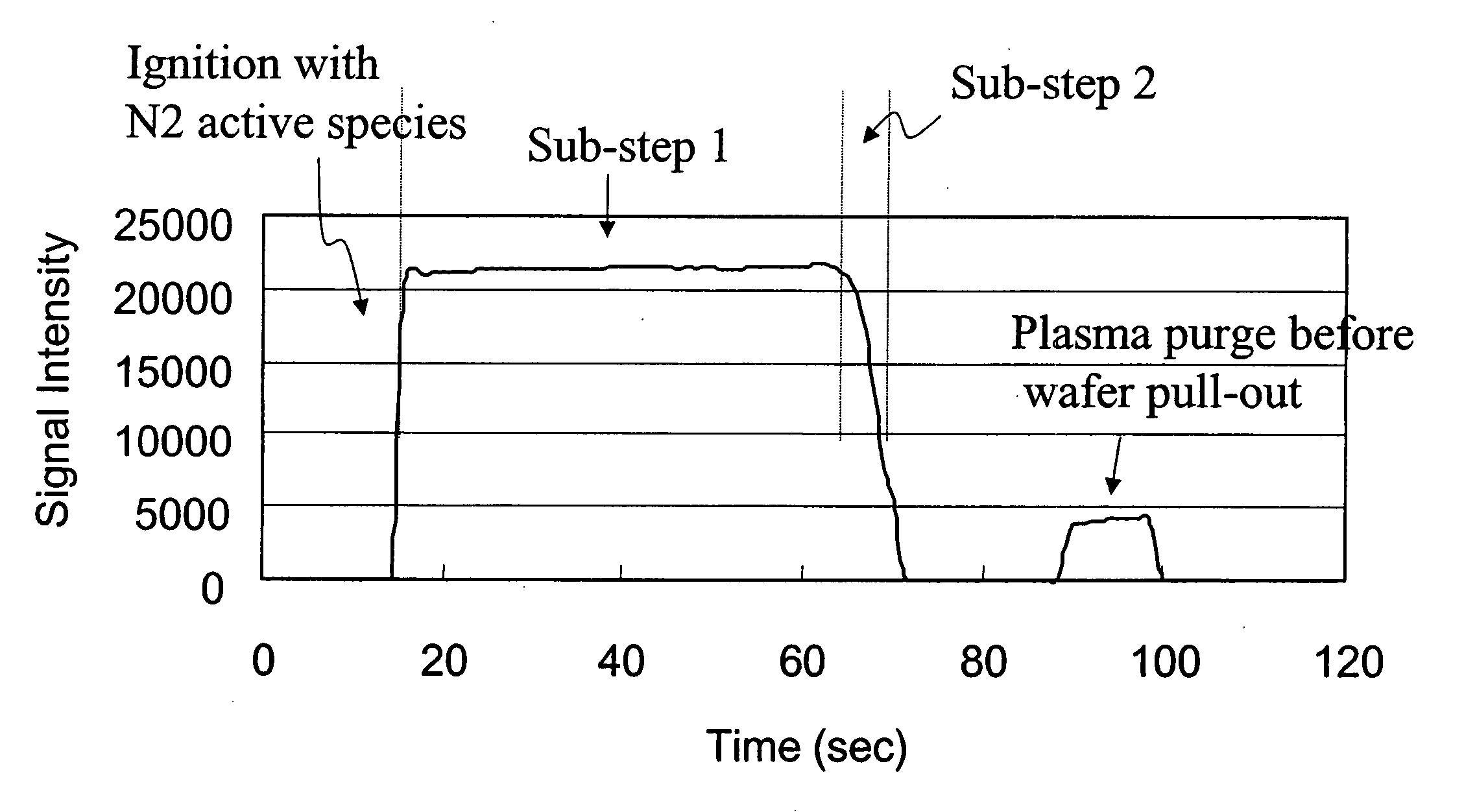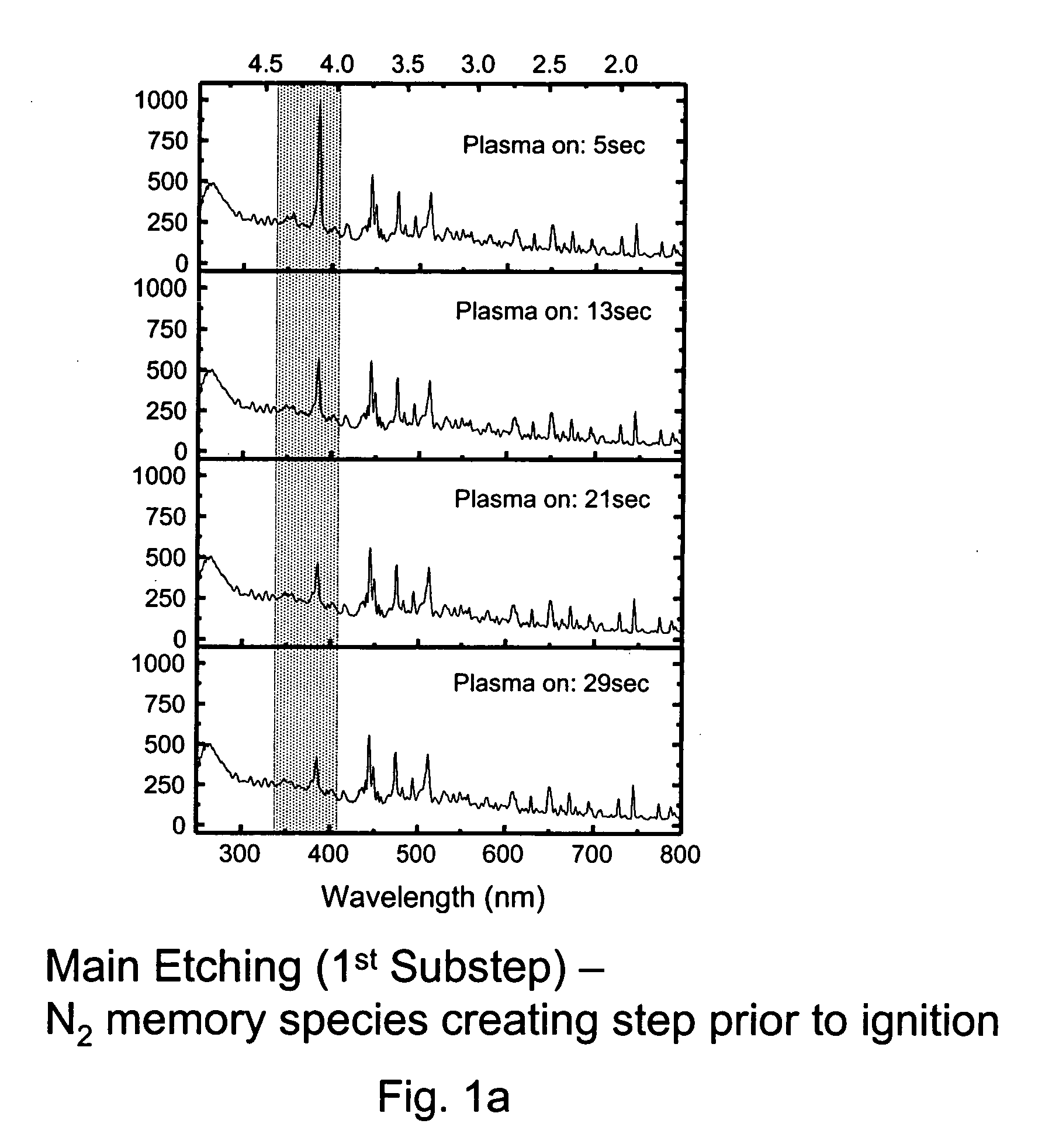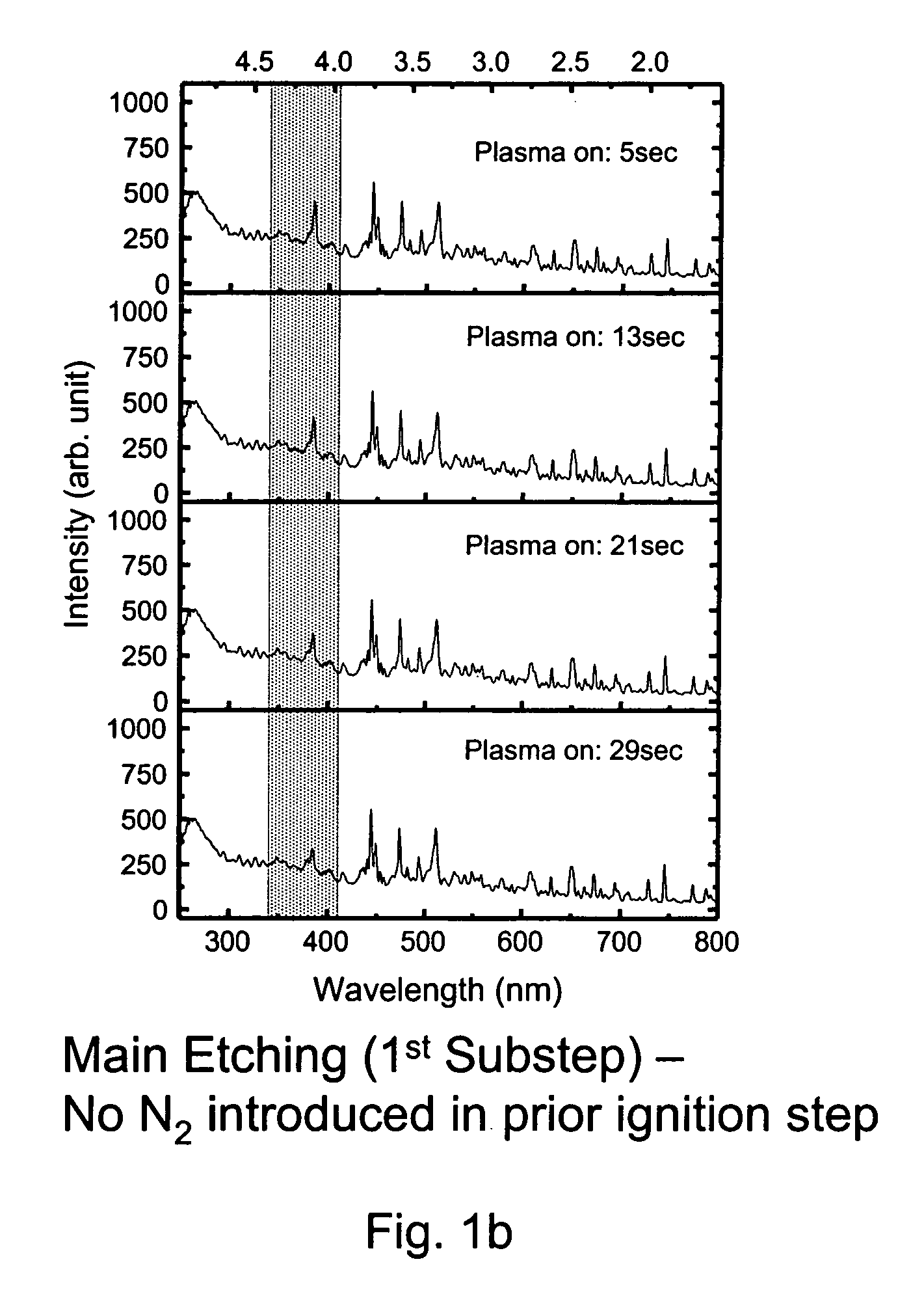Plasma etching methods using nitrogen memory species for sustaining glow discharge
a technology of nitrogen memory species and etching method, which is applied in the direction of electrical equipment, decorative surface effects, decorative arts, etc., can solve the problems of increasing flow rate, affecting the ignition effect of patterned profiles, and maintaining glow discharge during plasma ignition, so as to improve glow discharge ignition characteristics and reduce pressure
- Summary
- Abstract
- Description
- Claims
- Application Information
AI Technical Summary
Benefits of technology
Problems solved by technology
Method used
Image
Examples
example 1
[0031] In a LAM Model 9400PTX plasma etching apparatus, a substrate having an organic antireflective coating disposed on a surface thereof was placed on the substrate holder of the apparatus. The substrate was then subjected to three separate sets of conditions as shown below in Table 1. In a first “stable” phase, oxygen, helium and N2 are introduced at the flow rates and pressures indicated in Table I with no power applied. In a second phase (1st Substep), the flow of N2 is stopped and a source power of 240 W, at 13.56 MHz is applied to the electrode and 70W at 13.56 MHz is applied to the second (bias) electrode.
TABLE 1N2 Effect (No Plasma)Stable1st Substep2nd SubstepPressure (mt)555Source power (W) (13.56 MHz)0240240Bias Power (W) (13.56 MHz)07070O2 flow (sccm)101010He flow (sccm)404040N2 flow (sccm)10000Backside He pressure (T)888Time (s)˜10-20EP mode5Glow discharge on-rateN / AUp to 100%
[0032] In the Stable step, the reaction gases are allowed to stabilize prior to the applicati...
example 2
[0033] In a process using the same type of plasma etching apparatus and a similar substrate as Example 1, the substrate was then subjected to four separate sets of conditions as shown below in Table 2. In a first “stable” phase, oxygen, helium and N2 are introduced at the flow rates and pressures indicated in Table 2 with no power applied. In this Example, a separate ignition step is included (independent of the 1st Substep) wherein N2 continues to be introduced while power is applied. A source power of 240 W, at 13.56 MHz is applied to the electrode and 70W at 13.56 MHz is applied to the second (bias) electrode for approximately 3 seconds. The flow of N2 gas into the chamber is then stopped, and the substrate is subsequently etched. “EP mode” refers to endpoint etching wherein the etching occurs until a predetermined endpoint is detected by optical emission spectroscopy (OES).
TABLE 2N2 Memory Effect (Plasma)StableIgnition1st Substep2nd SubstepPressure (mt)5555Source power (W)0240...
example 3
[0035] In a process using the same type of plasma etching apparatus and a similar substrate as Example 1, the substrate was then subjected to five separate sets of conditions as shown below in Table 3. In a first “stable” phase N2 is introduced at the flow rate and pressure indicated in Table 3, with no power applied. A source power of 240 W, at 13.56 MHz is applied to the electrode and 70W at 13.56 MHz is applied to the second (bias) electrode for approximately 3 seconds. The application of power to the electrodes and the flow of N2 gas into the chamber are then stopped for about 20 seconds. During this second stabilizing (Stable-2) step, the reaction gases and other parameters for the main etching steps are allowed to stabilize before applying power. Subsequently, power is applied as indicated in Table 3, and the substrate is etched. As shown in FIG. 1a, the N2 memory species created in the Memory Species Creating Step show a specific signal at 385 nm, and these species persist in...
PUM
| Property | Measurement | Unit |
|---|---|---|
| chamber pressure | aaaaa | aaaaa |
| pressure | aaaaa | aaaaa |
| power | aaaaa | aaaaa |
Abstract
Description
Claims
Application Information
 Login to View More
Login to View More - R&D
- Intellectual Property
- Life Sciences
- Materials
- Tech Scout
- Unparalleled Data Quality
- Higher Quality Content
- 60% Fewer Hallucinations
Browse by: Latest US Patents, China's latest patents, Technical Efficacy Thesaurus, Application Domain, Technology Topic, Popular Technical Reports.
© 2025 PatSnap. All rights reserved.Legal|Privacy policy|Modern Slavery Act Transparency Statement|Sitemap|About US| Contact US: help@patsnap.com



